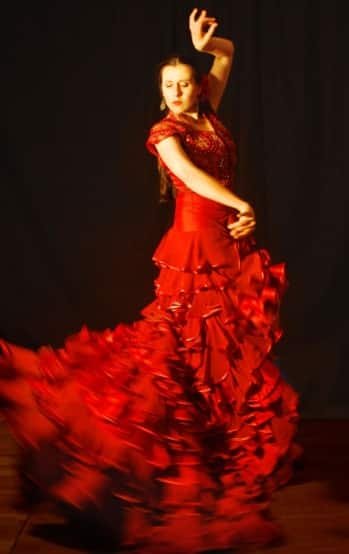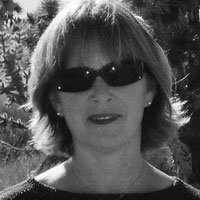
The Complicated History of Flamenco in Spain
by Sandie Holquin/Zocalo Public Square/Smithsonian.com
During the 1964-1965 New York World’s Fair, an advertisement for the Bates textile company in the Pavilion of Spain’s guide book featured a fetchingly posed young woman, rose in mouth, with a ruby red bedspread draped over her body to form the likeness of a flamenco dress. The text beckons us to “fall in love with Spain—and Bates’ ‘Flamenca!’” and encourages us to discover “fashion’s new passion in bedspreads … each bedspread smoldering with two tones of a hot-blooded color.”
In the U.S. and elsewhere, flamenco is a pervasive marker of Spanish national identity. For proof of its currency in pop culture, look no further than Toy Story 3: Buzz Lightyear is mistakenly reset in “Spanish mode,” and becomes a passionate Spanish flamenco dancer. Indeed, the world outside Spain often stereotypes the nation as inhabited by flamenco dancers, singers, and guitar players who are so “passionate,” they have little time to engage in the day-to-day world of the mundane.
Inside Spain, however, the relationship between the flamenco art form and Spanish national identity has been fraught for more than a century. Indeed, the world’s love of flamenco has long created problems within Spain, where the performance was once considered a vulgar and pornographic spectacle.

Carol graduated from Riverside White Cross School of Nursing in Columbus, Ohio and received her diploma as a registered nurse. She attended Bowling Green State University where she received a Bachelor of Arts Degree in History and Literature. She attended the University of Toledo, College of Nursing, and received a Master’s of Nursing Science Degree as an Educator.
She has traveled extensively, is a photographer, and writes on medical issues. Carol has three children RJ, Katherine, and Stephen – one daughter-in-law; Katie – two granddaughters; Isabella Marianna and Zoe Olivia – and one grandson, Alexander Paul. She also shares her life with her husband Gordon Duff, many cats, and two rescues.
ATTENTION READERS
We See The World From All Sides and Want YOU To Be Fully InformedIn fact, intentional disinformation is a disgraceful scourge in media today. So to assuage any possible errant incorrect information posted herein, we strongly encourage you to seek corroboration from other non-VT sources before forming an educated opinion.
About VT - Policies & Disclosures - Comment Policy




Viennese waltz is likely the first, formal couple dance, begun in the 18th century, followed in the 19th century by flamenco and polka. In the 1890s, Argentine tango swept Europe, but was banned in Boston and Charleston. Then in the 1920s, rebellious flappers flaunted puritans with the Charleston dance. In the 30s, Lindy Hop celebrated Lindberg. The 40s brought jitterbug to western warriors. Post war music changed and East Coast, West Coast swing developed, and derivatives of Whip in Texas, Push in the Midwest and Shag in the east coast developed. All this ended with the silly self wiggle dances of the 60s. Discover couple dancing, a wonderful social skill, fun to do, fun to watch.
“If you are laughing and dancing….you are living”
I think the tango is awesome….
Comments are closed.